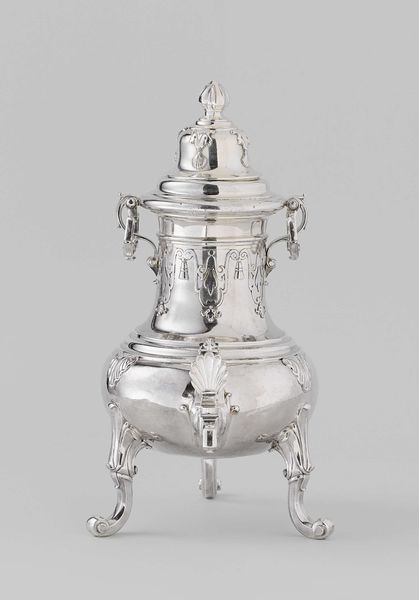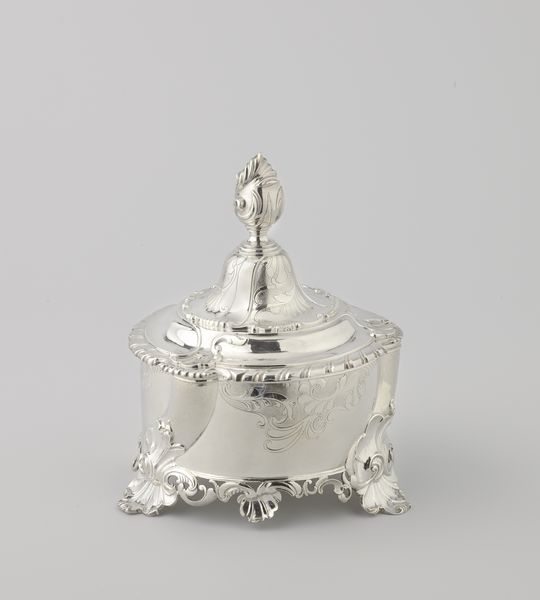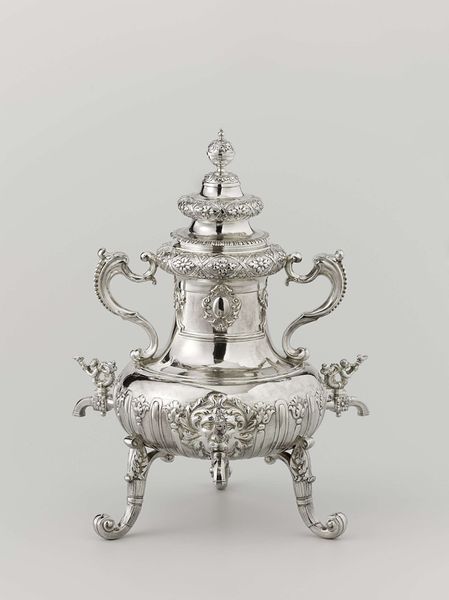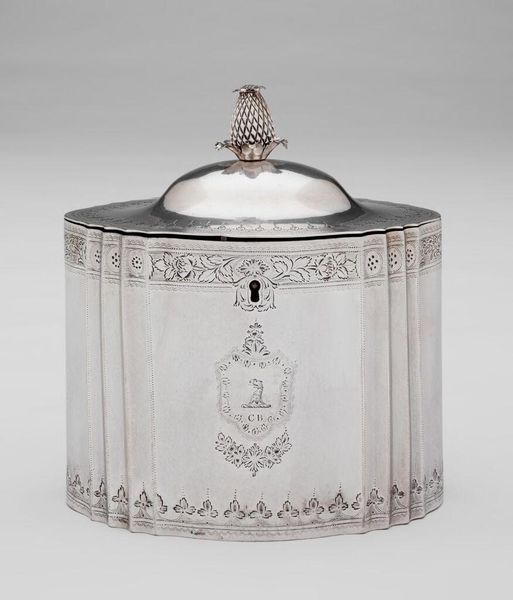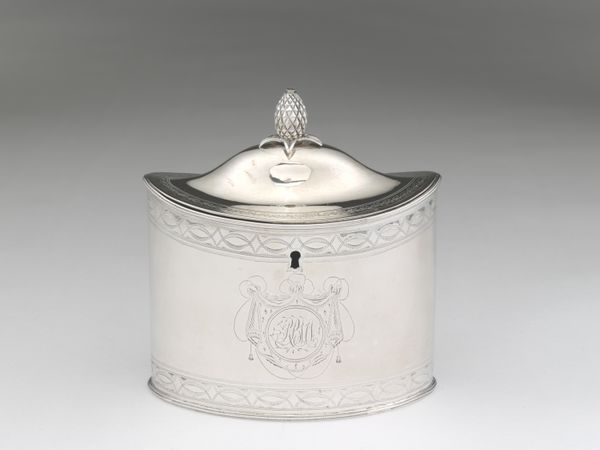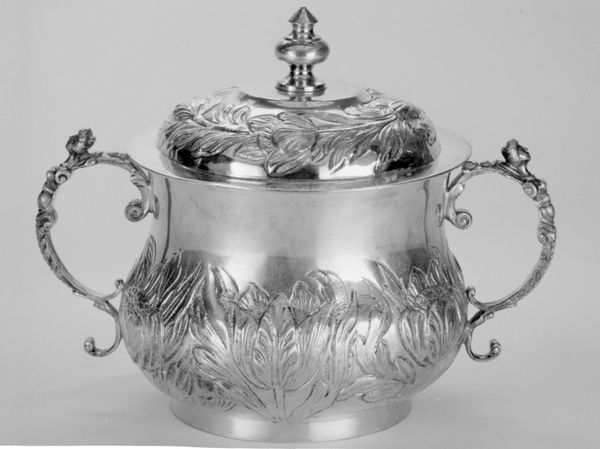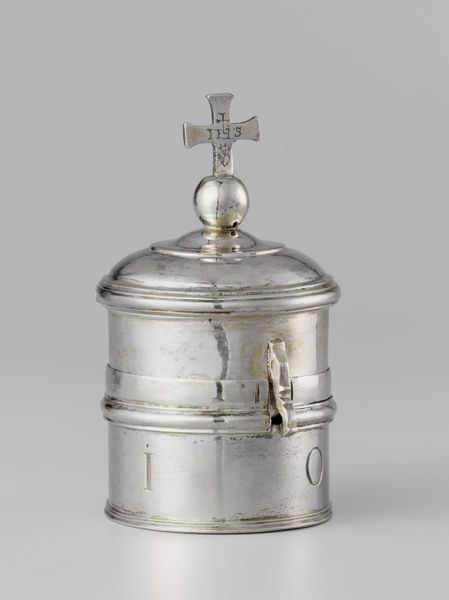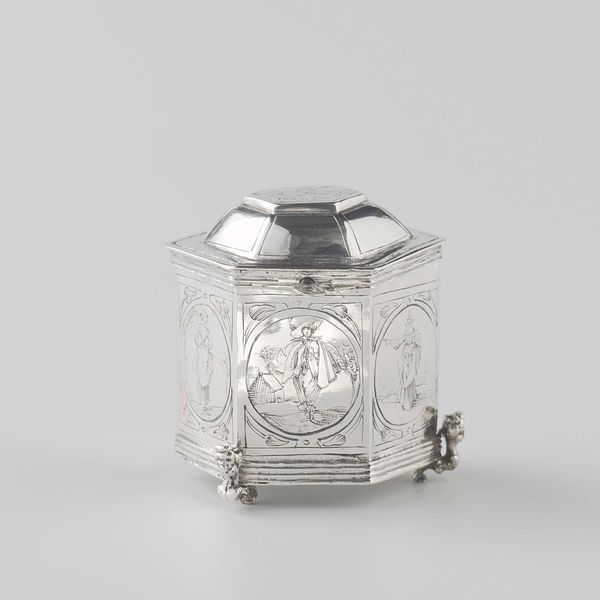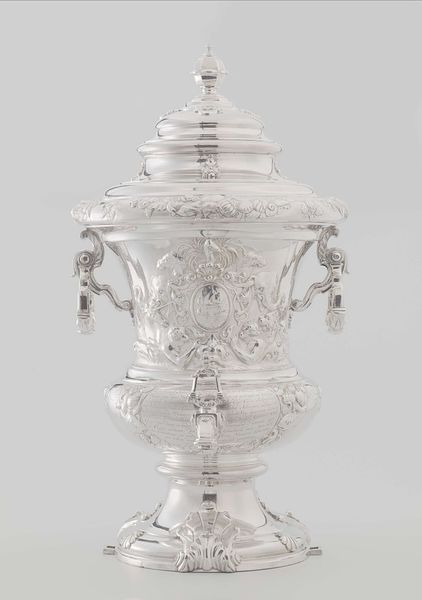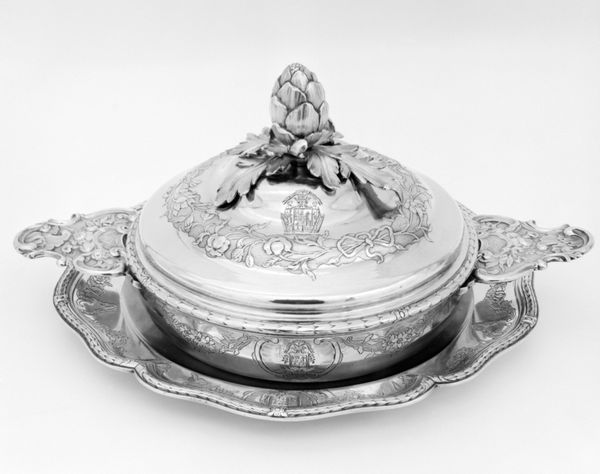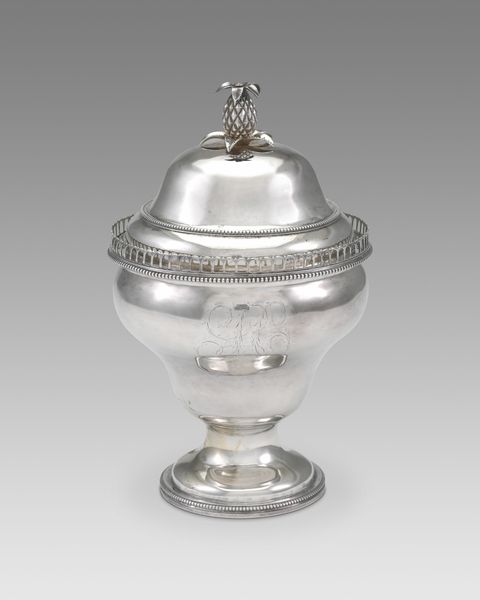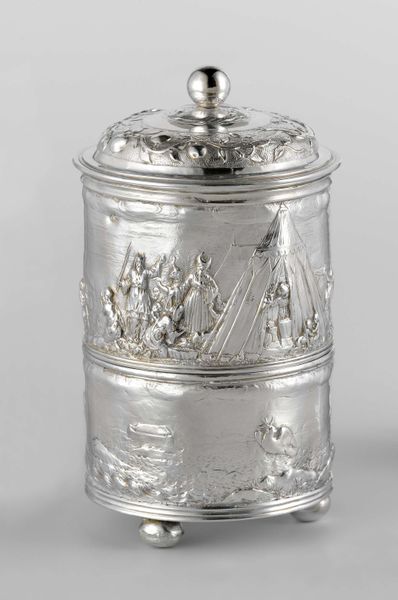
Dimensions: height 20.1 cm, diameter 14.7 cm, weight 7.6 gr
Copyright: Rijks Museum: Open Domain
Editor: Here we have a silver tobacco box, created in 1776 by Johannes Schiotling. Its Rococo style is immediately apparent. It looks quite ornate, almost delicate for something intended to hold tobacco. What stands out to you? Curator: Formally, the object presents an intricate play of lines and surfaces. Note how the cylindrical body contrasts with the flared, almost tent-like lid. Observe the repetitive, vertical striations along the box, creating a rhythm broken by the garlands. What is the effect of these decorations in terms of pure design? Editor: I see what you mean about the contrasting shapes. The vertical lines do add a structured feel beneath all the frills. But isn't it almost too much? Does the ornamentation distract from the box's overall form? Curator: The ‘excess’ is precisely the point. Rococo revels in ornamentation, defying strict geometrical order. It aims for an aesthetic experience primarily. Consider the surface quality, its polished reflective sheen and how that emphasizes its structural complexity. Is this merely decoration or is it a redefinition of form itself? Editor: That’s a good point, seeing the reflective quality really does highlight the meticulous work. It is clear this is more than just decoration. Looking at the object as a composition helps clarify its artistic intention. Curator: Precisely! By engaging with the work through careful attention to structure and visual relationships, we start to move beyond pure aesthetic appreciation. Form dictates the function, the feel and also the reading of the object. Editor: Thank you! Focusing on the structure really allowed me to understand the relationship between form and artistry in the tobacco box.
Comments
rijksmuseum about 2 years ago
⋮
This tobacco box has features associated with two different styles. The curved shape and pierced lower border with rocailles (the ‘foamy’ forms) are typical of the Rococo. The vertical grooves (fluting) on the box and the lid, the laurel wreaths and the precisely rendered flowers of the finial, by contrast, are part of the Neoclassical repertory. Many objects, including furniture, were made in such a hybrid style.
Join the conversation
Join millions of artists and users on Artera today and experience the ultimate creative platform.
